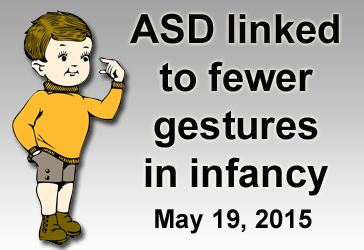Repetitive and Ritualized Behavior in Child Development and Autism
Did you know that repetitive and ritualized behaviors are a standard part of growing up? Already at birth, infants show repetitive behaviors such as kicking and waving. Similarly, many toddlers perform some type of ritualized behavior, such as demanding the same story be read every night.
Yet, both repetitive and ritualized behaviors are key pieces of an Autism Spectrum Disorder (ASD) diagnosis. How can these two behaviors be a problem if most children do them? In ASD, the persistence past childhood, and frequency and duration of these behaviors, impairs daily functioning. For example, making repeated and unusual hand movements can stigmatize a child at school, reducing their chance to socialize with other children.
Problematic behaviors can appear in almost any body part, from grimacing of the face to hand flapping to body rocking. Sometimes repetitive traits include making noises, like humming or tongue clicking.
REPETITIVE BEHAVIORS DURING TYPICAL GROWTH
Most people go through periods of repetitive behavior, not just those with ASD. Babies go through a period of repetitive behaviors that are thought to go hand-in-hand with stages of their brain and muscle growth. For example, rhythmic leg kicking usually comes before repetitive actions of the arms or legs. Similarly, finger flexing occurs just before an infant acquires the ability to grasp various objects.
Why do infants follow a timeline of motor behavior? Learning how to move takes practice! Scientists think that repetitive behaviors help infants practice their motor skills. This leads to movements that are more coordinated, refined, and directed. It is not yet clear if this repetitive “practice” is needed for brain, muscle or sensory system development.
RITUALIZED BEHAVIORS DURING TYPICAL GROWTH
Older children from the age of 2 to 4 may have ritualized behaviors. Ritualized behaviors occur most often at bedtime, mealtime, and baths, or when a change is accompanied by normal fears or anxieties. These include “Insistence on Sameness” (same story, same video, same clothes) and an obsession with things being “Just Right” (the cookie must be whole, not broken; toys must be arranged in particular patterns; clothing preference is based on how clothes feel).
Two out of three neurotypical children will use some form of ritualized behavior. These behaviors also show up at predictable time points in development. An “Insistence on Sameness” typically starts from 14 to 19 months, while wanting objects to be “Just Right” comes in later, at 21 to 26 months. These ritualized behaviors peak at 2 to 4 years, and then decline in frequency as the child matures.
What is the developmental purpose of ritualized behaviors? Some have hypothesized that they are a way to help a child organize, accommodate, and eventually master the environment. Others propose that it helps children gain a sense of self-control and helps them regulate their internal emotional state.
REPETITIVE AND RITUALIZED BEHAVIORS IN AUTISM
Repetitive and ritualized behaviors can be performed by any child or adult. However, those with ASD may find that the duration, intensity or frequency of these behaviors may limit their ability to function socially or at their job. These behaviors happen more often when the person is anxious, stressed, bored or excited. You may have heard the word “stimming” as a feature of autism. This term comes from the idea that repetitive behaviors are self-stimulatory.
Repetitive and ritualized behaviors are also seen in people with other brain-related conditions, such as Tourette’s syndrome and obsessive compulsive disorder. Compared to these other conditions, children with ASD perform arm or finger movements, and experience coordination difficulties, more often.
Children who have both ASD and a lower IQ are more likely to do repetitive behaviors compared to higher functioning individuals. Hypersensitivity in some of these individuals is thought to lead to anxiety. Scientists think that this anxiety may be calmed by doing repetitive behaviors.
For children and adults with ASD, repetitive and ritualized behaviors can disrupt normal life functions. Treatments for these behaviors in autism include either medicinal treatment or behavioral intervention (see therapy section). Most of the medicinal treatments also can affect other behaviors, such as irritability and aggression. Because of this, treatment of these other behaviors will also sometimes lessen repetitive and ritualized behaviors.
Check out the individual research studies AutRR has covered on this topic!
Published March 12, 2018 by Shana R. Spindler, PhD



